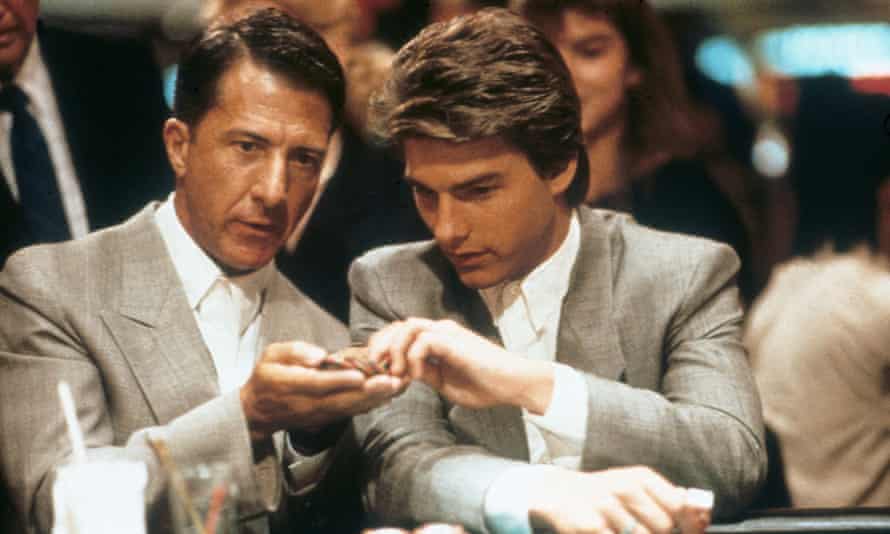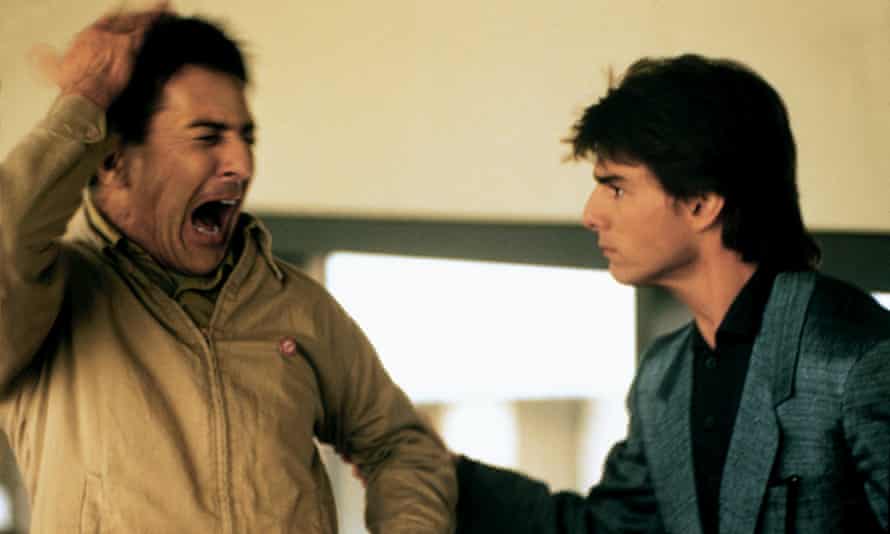Rain Man Movie Who Took This Picture
'Rain Man was the best thing that ever happened to autism," says psychiatrist Dr Darold Treffert. "No gigantic public education or PR effort could have produced the sensational awareness that Rain Man brought to the national and international radar screen." Treffert, an expert on autism and savant syndrome, worked on Rain Man as a script consultant, which may explain his view on a film that has become divisive in terms of its impact and influence on perceptions of autism.
When the Oscar-winning screenwriter Barry Morrow had the idea for Rain Man, he had barely heard of the condition. "The word 'autism' never appeared in my original screenplay," he says. "Looking back, Rain Man was never a story about autism. It was a tale of two estranged brothers, their journey and then their fragile redemption."
Released 30 years ago this week, Rain Man begins when self-centred hustler Charlie Babbitt discovers he has an older brother, Raymond; an institutionalised autistic savant who has inherited all of their father's $3m fortune. Charlie, bequeathed a 1949 Buick Roadmaster convertible, kidnaps Raymond and the pair embark on a road trip. Morrow took inspiration for the plot from his own life: he once kidnapped a man with learning disabilities named Bill Sackter to prevent him from being sent back to an institution. "That's where basically I got the idea of the kidnapping of Raymond Babbitt."
Morrow later turned his friendship with Sackter into the Emmy award-winning TV movie Bill, starring Mickey Rooney and Dennis Quaid. Then, in 1984, Morrow had a chance encounter with "megasavant" Kim Peek. "When I met him," says Morrow, "he knew all the credits of the movies I'd ever worked on, and every sport question I could challenge him with, he answered." Peek had memorised 12,000 books, often reading two pages simultaneously – one with his left eye, the other with his right. Astounded, Morrow "locked into him", and the idea for Rain Man was born.
The film's journey to the screen was arduous, shedding three directors (Martin Brest, Steven Spielberg and Sidney Pollack) before landing on Barry Levinson. Raymond was played by Dustin Hoffman, then 50 and a character actor at the peak of his powers, alongside the Top Gun hotshot Tom Cruise, 25, as Charlie. In his youth, Hoffman had worked at the New York Psychiatric Institute; for Rain Man he spent a year intensively researching autistic and savant individuals including Temple Grandin, Joseph Sullivan, who had incredible skills with numbers, and savant twins George and Charles.
Morrow recalls a meeting between Peek and Hoffman, and Peek "walking around the room, espousing all these facts … hitting his head and flapping his hands", with Hoffman walking closely behind, "mirroring him, almost like he's trying this character on like a coat". The fit was not quite right, and Hoffman created what Treffert calls a "composite savant", adding autism to the character. Subsequently, Rain Man led many people to assume that everyone with autism possessed incredible savant abilities. In fact, Treffert points out, "only one out of 10 people with autism are savants", and those with skills akin to Raymond's are "exceedingly rare".
Rain Man was filmed during the writers' strike of 1988, and Hoffman estimates 90% of his dialogue came from Princeton football star Kevin Guthrie and his autistic brother Peter, from whom he drew many of Raymond's mannerisms. Kevin had made a video of his brother's bedroom for Hoffman, which contains dialogue instantly recognisable from the scene when Charlie invades Raymond's room at Wallbrook.

Released in December 1988, Rain Man was quickly became a global phenomenon: it was the US's highest grossing movie of the year and won four Oscars, including best actor for Hoffman, who thanked the individuals that inspired Raymond in his speech. In terms of medical research and funding, "the floodgates opened," says Morrow. In the years following, rates of prevalence for autism spectrum disorder (ASD), as it became known, rose dramatically – today in the US, one in 59 children have ASD. A 2010 study identified a global "changepoint" year for autism: 1988. Could the cause be what Neurotribes author Steve Silberman dubbed "The Rain Man effect"? Treffert agrees with Morrow that "maybe the change in prevalence ... is more than coincidence", but points to other factors such as changes in diagnostic criteria, early infant screening and a rise in congenital abnormalities overall.
Thirty years on, as the parent of a child with autism, I view the film very differently. I found watching it again unexpectedly moving, as I identified with Charlie's journey from frustration and bewilderment to understanding. How, I wondered, does the autism community view the movie? "Many say that Rain Man is now damaging to autism awareness, and I see their point," says the autism advocate Chris Bonnello of Autistic Not Weird, who has Asperger's syndrome. The film, he believes, "should be regarded as a piece of history now". When I put this question to Bonnello's Facebook community, views were mixed. Although some enjoyed Rain Man, many found it "dated" and "inaccurate". One individual on the spectrum called it "the Apu of autism ... despite not being malicious in its portrayal, it's still a poor representation and a stereotype."
Morrow, however, takes exception to the word "stereotype". "Rain Man was, as far as I know, the first film to portray a lead character with either autism or savant syndrome," he says. "Perhaps it's become a stereotype in the eyes of some, but it didn't start there." Bonnello says the dilemma is that "no representation of autism is ever going to satisfy everyone, because it's such a wide spectrum and the people within it are so enormously different to each other, including in how their autism affects them." Yet the analogy with the Simpsons' Apu controversy is interesting. Today, there is growing criticism of non-disabled actors "cripping up" – but even back in 1988, the New Yorker critic Pauline Kael slated Hoffman's depiction of Raymond, asking "why the movie people didn't just have an autistic person play the part".

Ali Vaux, who is "a late diagnosed autistic who happens actually to be a savant", says she feels unwelcome in the autism community "largely because of the stigma with this movie". However, she says: "I'm not certain the people who are so vocally repulsed by Rain Man remember what it was like in 1988. To even suggest that Raymond was a human with basic dignity was a really big deal." Kevin Guthrie agrees: "That he was someone you could love, you could root for ... that you could be disappointed that he was going back [to Wallbrook], that was something that you didn't have for autistic people at that time." Raymond's return to the institution is considered problematic today, but the "happy ever after" originally envisaged by Morrow would have been "too Hollywood", says Guthrie. Morrow feels the revised ending was the right one. "It sat there in people's subconscious like that little grain of sand that irritates, the oyster that creates the pearl."
The representation of autism on screen is increasing, although Bonnello observes "people have mixed feelings about whether or not the representation is accurate or meaningful". Since Rain Man, a string of films have featured autistic characters, including Temple Grandin, Mozart and the Whale, My Name Is Khan and Please Stand By. Netflix series Atypical and ABC's The Good Doctor are popular on the small screen, and a groundbreaking milestone was reached in 2017 with the release of Keep the Change, in which the lead roles were played by actors on the spectrum.
Rain Man's legacy for autism, it seems, is complex; a mixture of incredibly positive impact and enduring misinterpretation. "One for bad, two for good," says Raymond, as he boards the train back to Wallbrook. "Bet two for good," says Charlie.
Rain Man Movie Who Took This Picture
Source: https://www.theguardian.com/film/2018/dec/13/rain-man-at-30-autism-hoffman-cruise-levinson